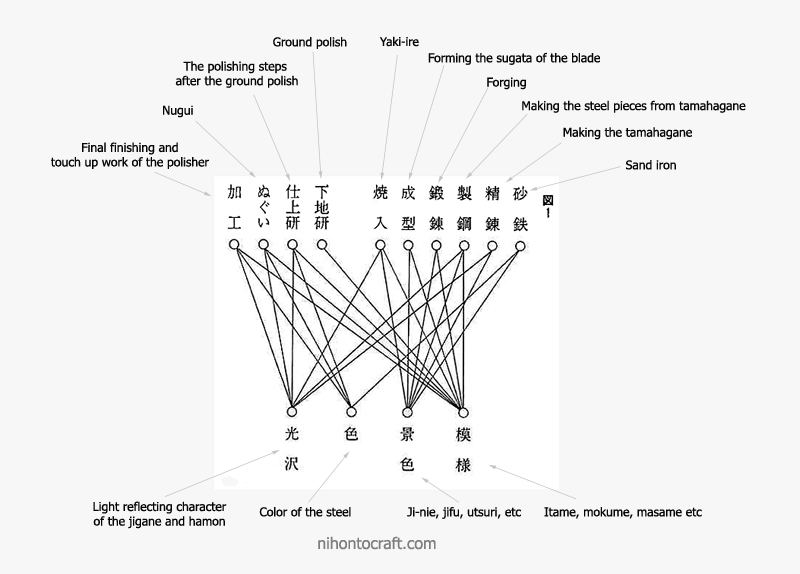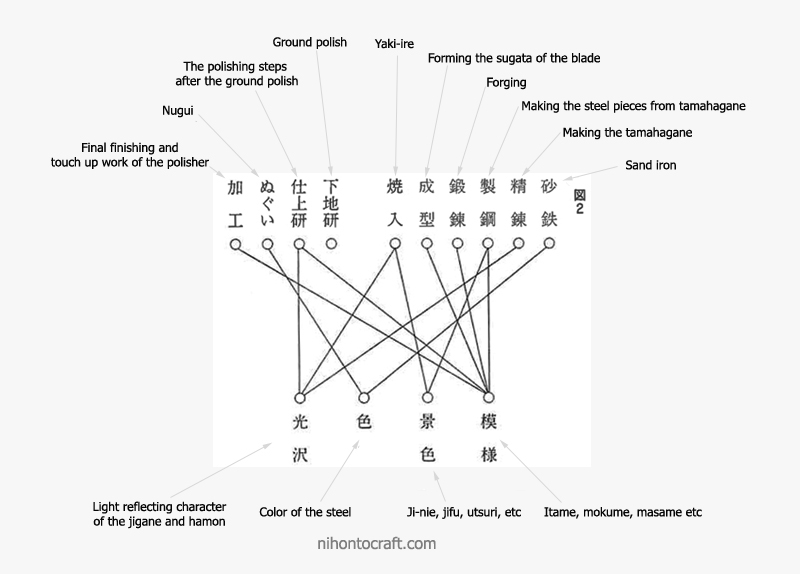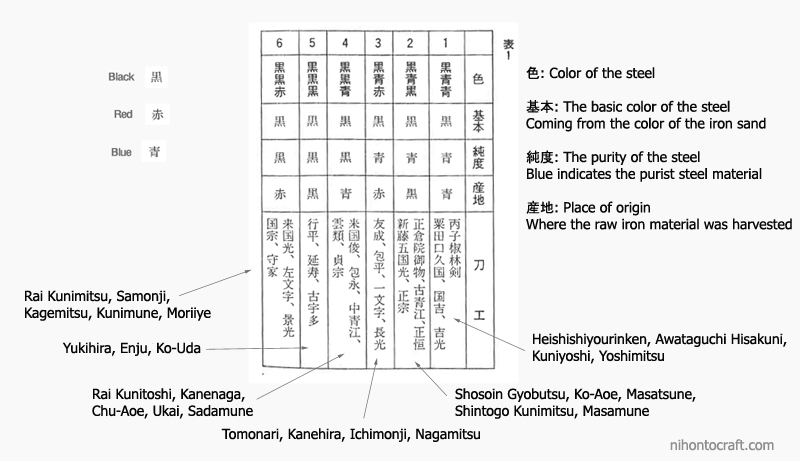
|
Research of Ji-gane
By Kawai Masaru
The illustrations below are from an article featured in the NBTHK's magazine, Token Bijetsu, in August of 1986. The author, Kawai Masaru, is a professional sword polisher. In the article, his study of steel color was summarized by two figures and one table.
Figure 1 illustrates the relationship between the color of the raw material, steel production, sword making and polishing processes. This figure shows all the contributing elements that govern the appearance of a blade.

In the article, the author explains that there are four elements contributing to the color of the steel.
1. The raw material of sand iron
2. Shiagetogi
3. Nugui
4. Final finishing by the polisher
Figure 2 shows only the most dominant contributing elements to the appearance of a blade.

Table 1 documents the author's observations of steel color in relation to the smiths who made them.

The flowing are the major points of Kawai Masaru's article
1. Figure 1 shows all the influences of steelmaking and polishing on the features of the ji-gane. However, the dominant contributing factors are as shown in Figure 2.
2. As one can see in Fig. 2, the polisher's work influences the ji-gane patterns (itame, mokume, masame, etc.), color, and light-reflecting character. The light reflecting character can be described as the glossiness of the jigane or as the manner and extent to which the jigane has luster.
3. Kawai Masaru's point is that polisher should work properly, so that he maintains the appearance of the ji-gane as it should be. In other words, as it appeared when the blade was first created. For color, the proper colors of Nihonto are as shown in Table 1, as influenced by such factors as the raw material, materials purity and area of production. While nugui may change the color, the polisher should make nugui so that it keeps the proper color of blades. As students of Nihonto we should be interested in knowing that the polisher can make such a change in the appearance of a sword.
For a description of the sword making and polishing processes please follow the links below to the NBTHK web site.
http://www.touken.or.jp/seisaku/koutei.html
http://www.touken.or.jp/seisaku/kenma.html
|











